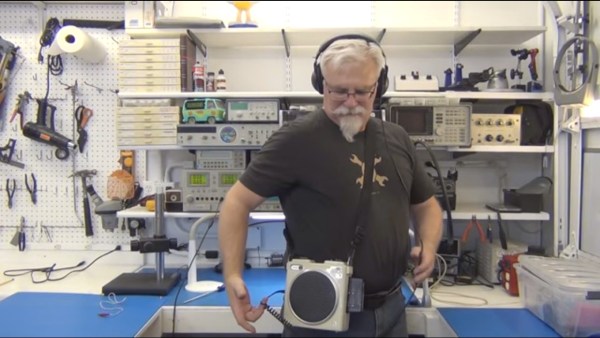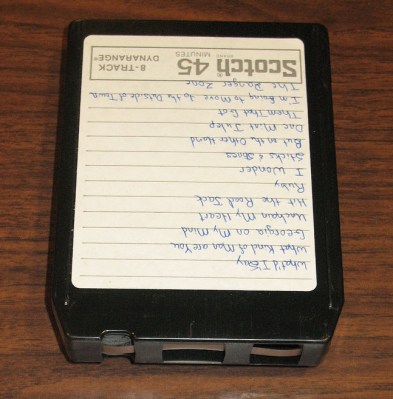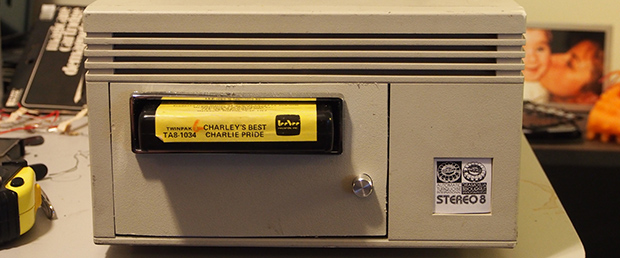Following time backward, for portable music we’ve had iPods, CDs, and cassette tapes which we played using small Walkmans around the size of a cigarette box. And for a brief time before that, in the 1960s and 1970s, we had 8-track tapes. These were magnetic tapes housed in cases around the size of a large slice of bread. Car dashboards housed players, and they also came in a carry-around format like the one [Todd Harrison] recently bought at a Hamfest for $5 and made more portable by machining clips for a strap and adding a headphone jack.
But before hacking it, he wanted to try it out. Luckily his sister had hung onto her old tapes and after plugging it in and sliding in a tape, it worked! Opening it up he found that the contacts for the batteries were rusted but the mechanical components and electronics inside were very clean. Though he did add glue to a crack in the plastic read-head support, cleaned out some grease, did some lubricating, and cleaned the contacts in the volume control’s potentiometer. Check out his teardown video below for those details or if you just want to see how it all works.
Then came making it portable so that he could embarrass his kids by carrying it around the mall. The shoulder strap didn’t come with it, so he machined some clips out of steel and snapped on a strap. It didn’t have a headphone jack and he didn’t want to embarrass his kids too much, so he added one. You can see that hack in the second video below, including how his repurposed jack automatically disconnects the speaker when the headphone plug is inserted. Personally, we think he looks pretty spiffy carrying it around wearing his Hackaday T-shirt.













